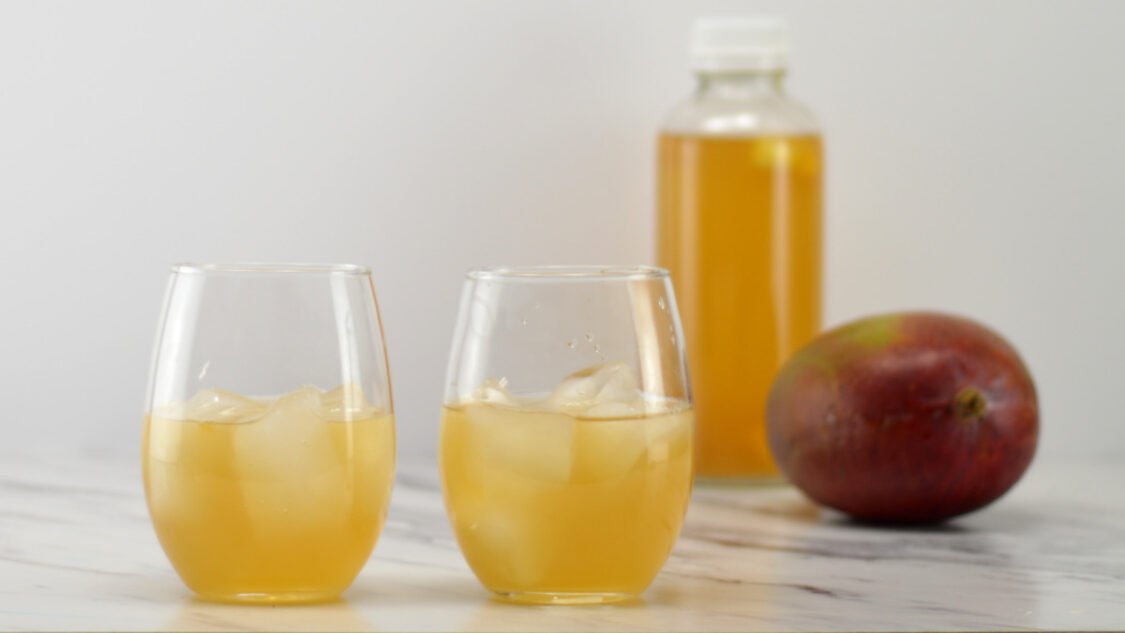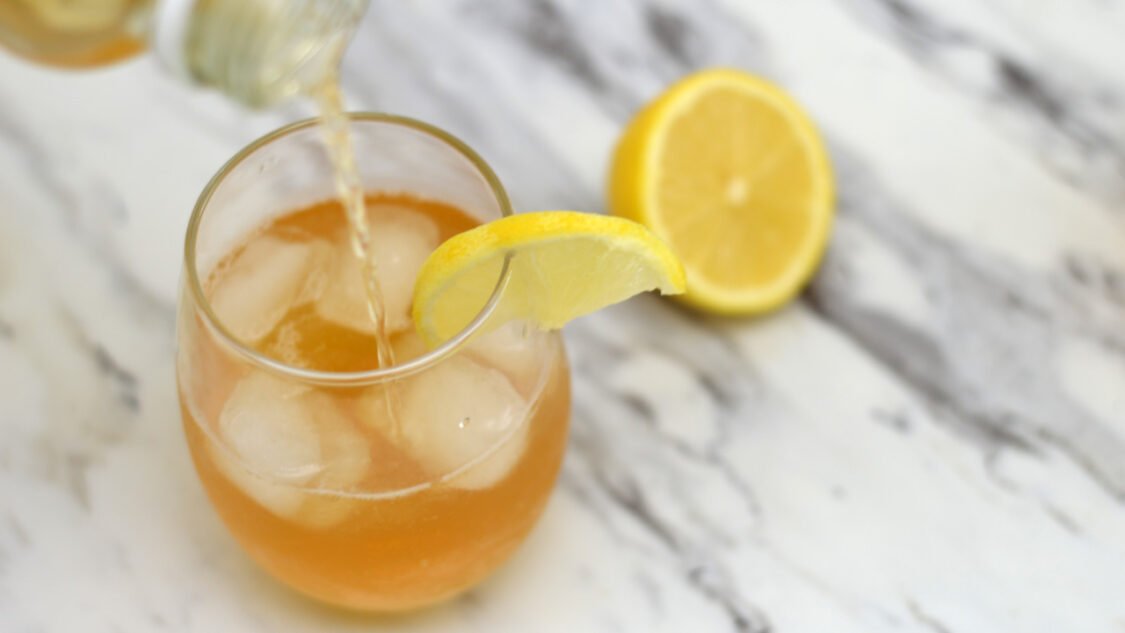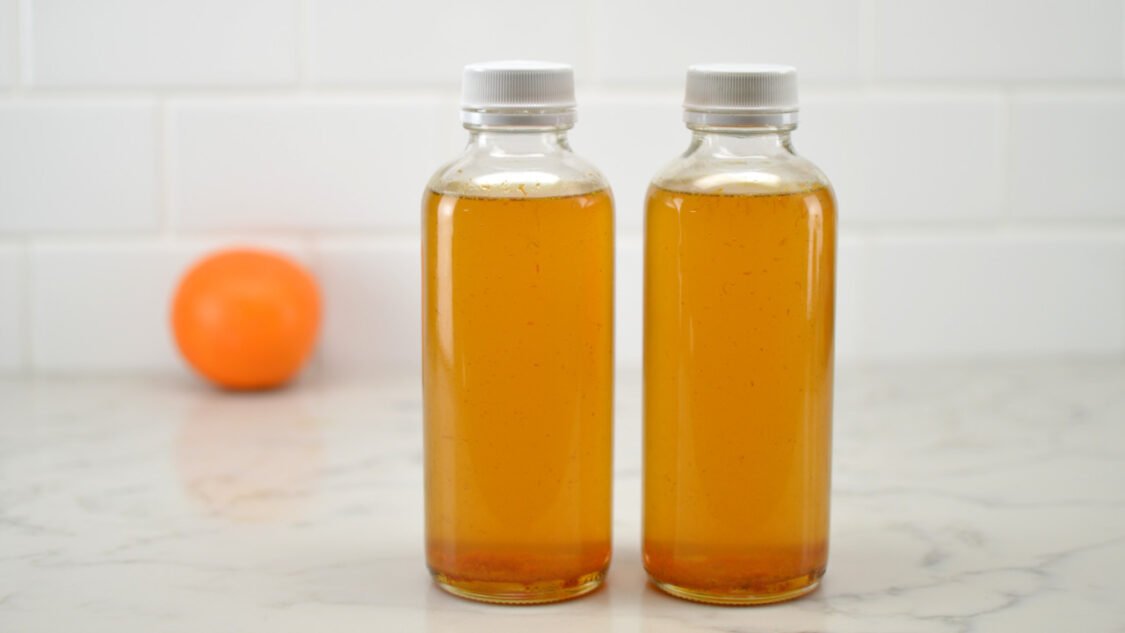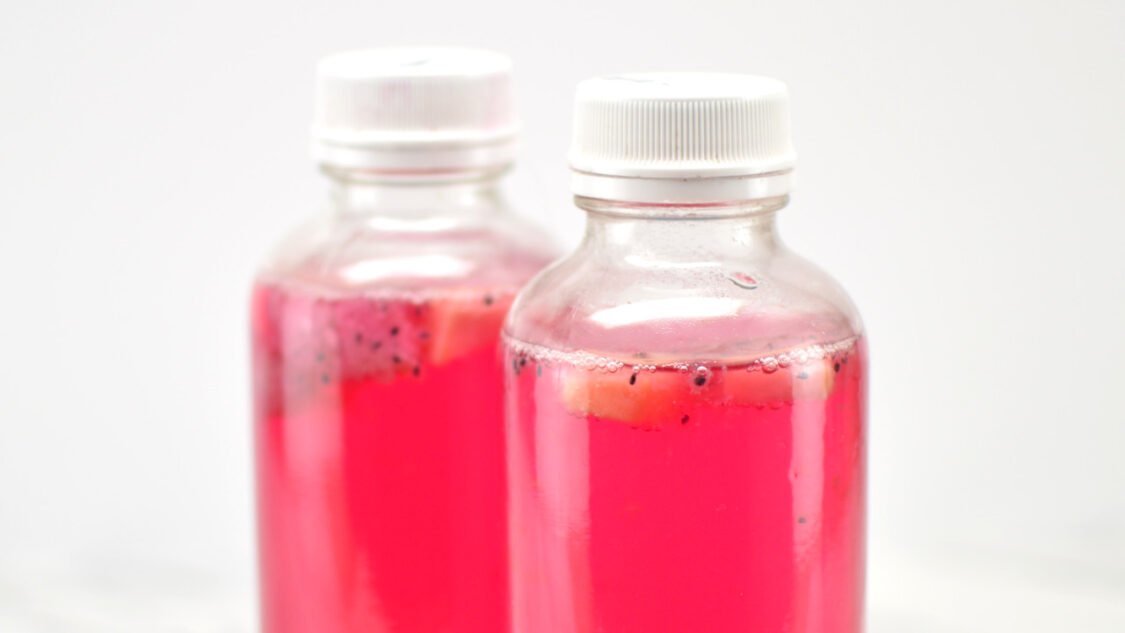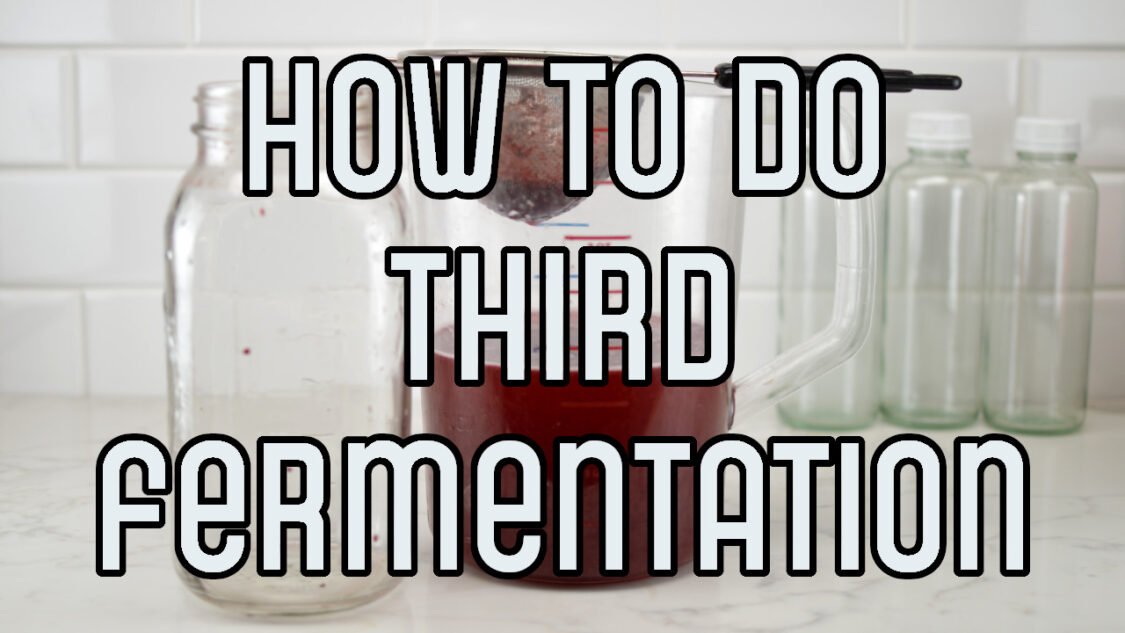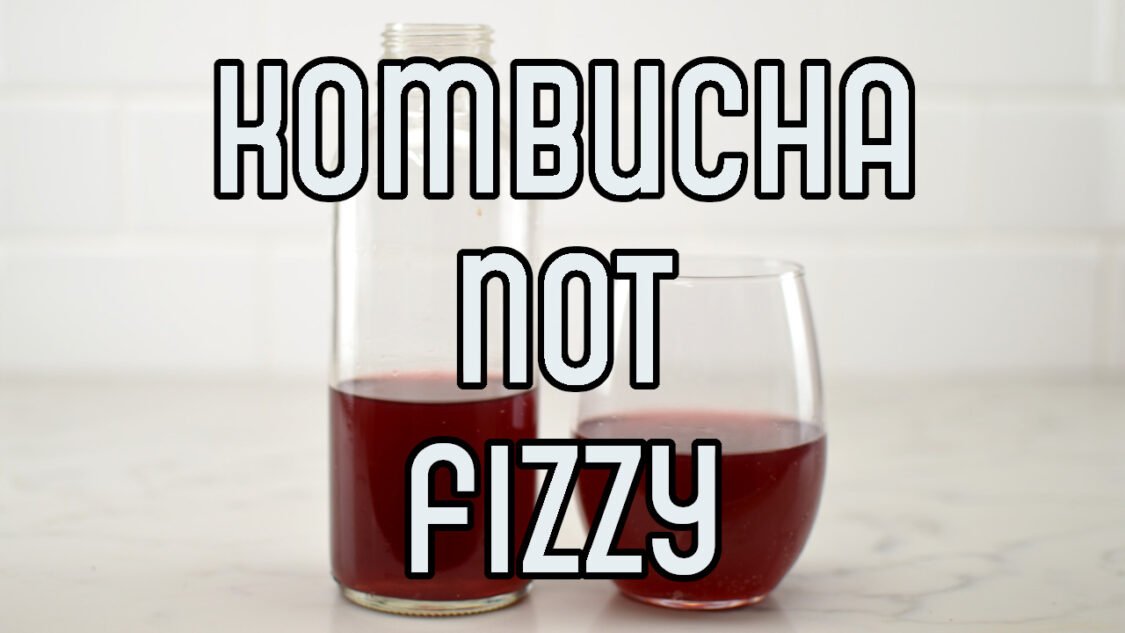Blueberry Kombucha

In July the local blueberry farms hang out their signs that it’s blueberry picking time, we would grab some containers and venture out to the to the pick your own stand with the girls and head into the rows of blueberry bushes loaded with berries. We worked down our designated row, cleaning the high bushes of the fruit, filling our buckets and bellies with the fresh, sweet fruit. At home we would eat them right from the bowl and make a pie or tart. Now I like to use them in kombucha!
Enjoy homemade blueberry kombucha on its own or use it as a base for a refreshing mocktail like a Blueberry Kombucha Collins Mocktail!
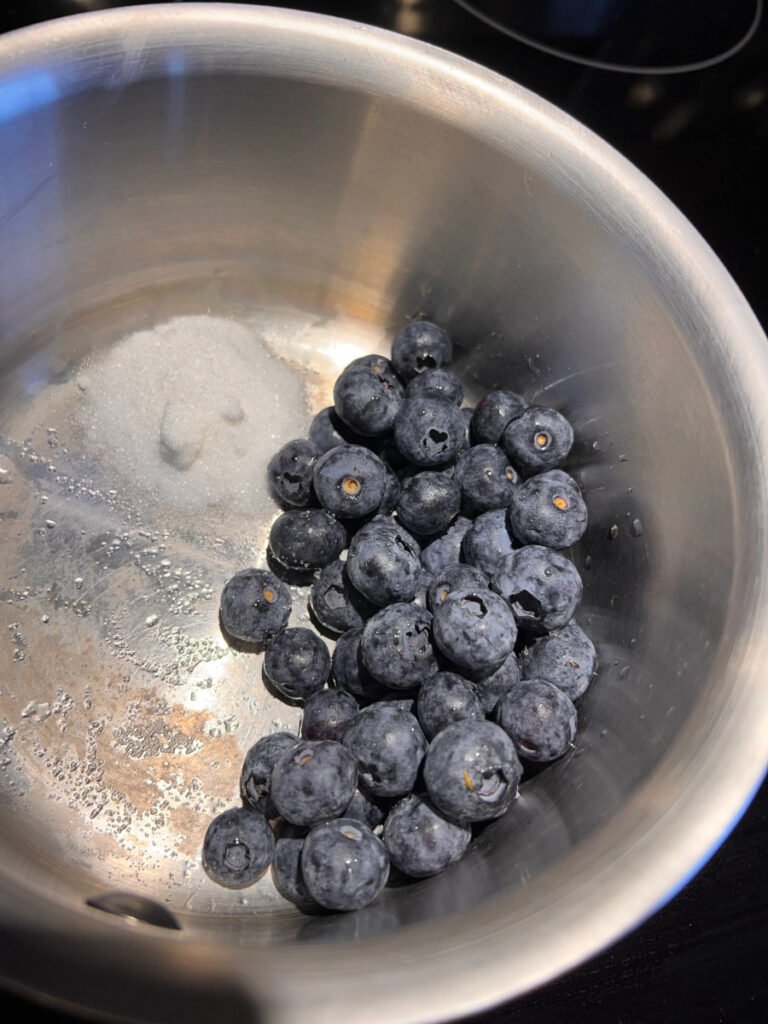
Kombucha Fermentation Overview
There are two fermentation phases when making kombucha:
Primary Fermentation: This is when you transform sweet tea into tart and tasty kombucha. Get all the details at my article on how to make kombucha.
Secondary Fermentation: This is when you carbonate your homemade kombucha by adding flavors (like blueberries ?) and sugars and bottling it.
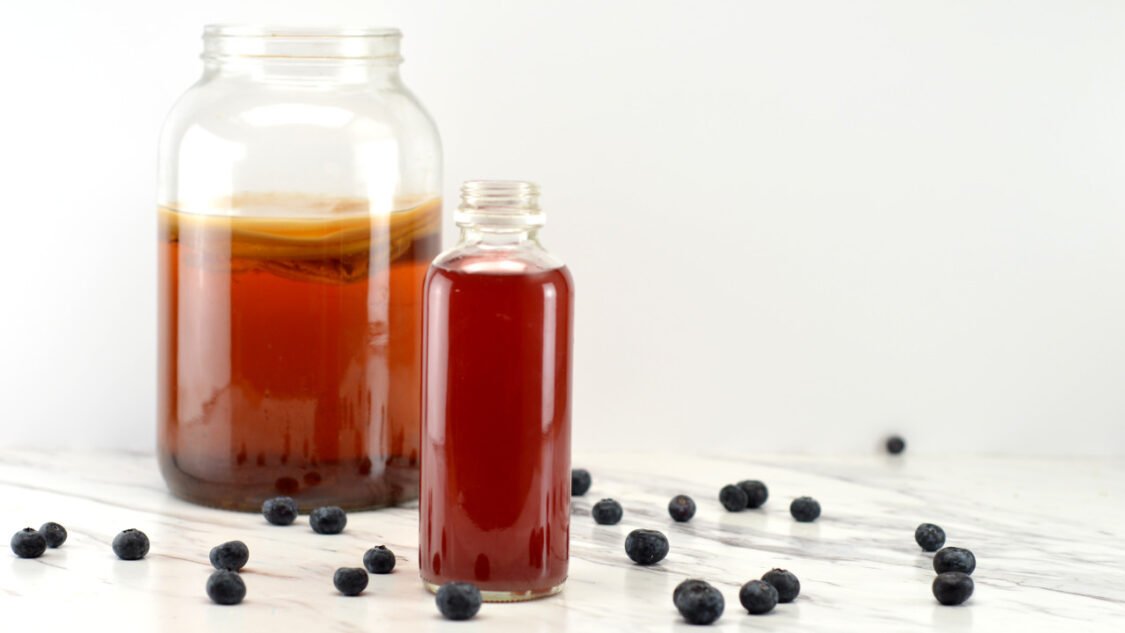
Preparing for Secondary Fermentation
This recipe makes about 7 x 16 fluid ounce bottles of finished kombucha (from a 1-gallon batch of unflavored homemade kombucha aka from your primary fermentation).
Reserve 2 cups (about 16 oz / 0.47L) kombucha and your SCOBY from your completed primary fermentation and set aside – you will use this as your starter for your next gallon batch of kombucha.
With your kombucha starter tea and SCOBY placed aside, you now have enough kombucha left to flavor and fill your bottles. This guide assumes are using 16 oz. glass bottles which are a popular choice for kombucha; however, there are many options for bottling kombucha.

Ingredients to make Blueberry Kombucha
Kombucha: Finished kombucha from your first fermentation is the base to which you will add the blueberry flavor.
Blueberries: Blueberries have a sweet taste with a touch of acid. The flavor of blueberries is generally subtle and common descriptors include, sweet (but not overly sweet), floral, woody, slightly astringent (drying), and musky with a touch of soft acidity. Unripe and underripe blueberries are typically very sour. Blueberries are small but juicy and will release juice when smashed or bitten. Wild blueberries are a smaller than cultivated ones and typically have a more floral taste.
For this blueberry kombucha recipe, fresh or frozen blueberries work equally well!
Sugar: For this recipe we will make a blueberry syrup with water and sugar. The additional sugar is for the bacteria and yeast to feed on which creates carbonation–extra fizzy goodness.
How to make Blueberry Kombucha
Make flavor syrup: Combine blueberries, sugar and water to a small saucepan and make a blueberry syrup.
Add Flavors: Add flavor syrup to each bottle.
Bottle: Transfer kombucha to fermentation bottles.
Condition: For 3 to 10 days, until it reaches the carbonation level you like.
Enjoy: Chill in the fridge before serving.
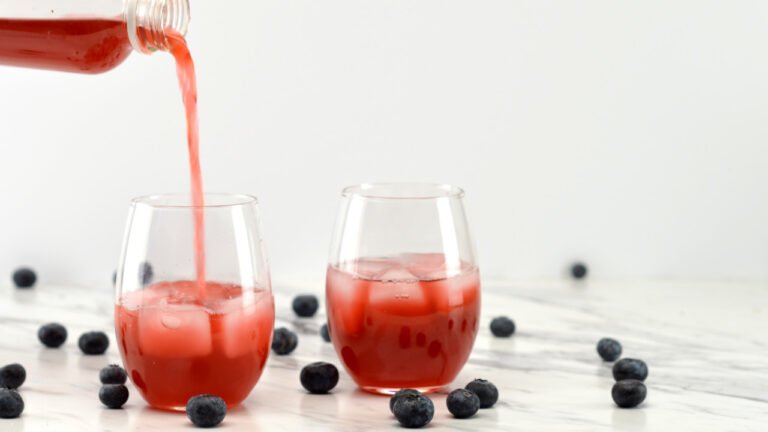
Blueberry Kombucha Recipe
Yield: 7 bottles • Active time: 20 minutes • Total time: 3 -10 days
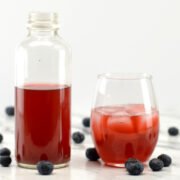
This recipe assumes you are doing a secondary fermentation (flavoring and carbonation) in the bottle. You may also incorporate a third fermentation using the same proportions but following the third fermentation steps.
Ingredients:
1-gallon homemade kombucha from a first fermentation, 1.9 L
1 cup blueberries, fresh or frozen, 148 g
1 cup tap water, 240 g
1 cup sugar 201g
Instructions:
Prepare flavor syrup: Combine blueberries, sugar and water to a small saucepan. Heat on medium until the mixture begins to simmer. Using the back of a large spoon or a potato masher, gently smash the berries to release their flavors and sugars. Remove from heat and let cool to room temperature. (You can set the pan in a bowl of ice water to speed up the cooling process.) Once cool, strain into a heat resistant glass measuring cup. You should have about 1 cup of flavored syrup.
Flavor: Evenly divide blueberry syrup between bottles. About 2 Tbsp tsp per bottle.
Sweeten: Since the syrup contains the sugar, there is no need to add more sugar!
Fill bottles: Transfer kombucha into fermentation bottles, leaving about 1 inch empty space at the top.
Cap: Cap the filled bottles and tighten the cap snugly.
Ferment: Place in a dark, room temperature area for 3 to 10 days, until it reaches the carbonation level you like. This process will go faster in warmer climates, and slower in cooler climates.
Enjoy: Chill your blueberry kombucha in the fridge before serving. Homemade Kombucha can be stored in the fridge, tightly sealed, for several weeks. Since this recipe uses a flavoring syrup there is typically no reason to strain it unless baby SCOBYs form in the bottles.
Homemade Kombucha can be stored in the fridge, tightly sealed, for several weeks.
Tips & Tricks:
Make sweet tea for your next batch the night before you flavor and bottling and let it cool on the stove overnight so that you can flavor your kombucha and get your next batch started at the same time.
If this is your first time brewing, it may be helpful to use a plastic water bottle as a gauge. Fill a recyclable plastic bottle with kombucha (leaving 1.5 inches empty at the top). When this bottle becomes rock hard, you’ll know the glass bottles are also ready. This will help you gauge how long it take for kombucha to carbonate your climate and will prevent bottle explosions.
Nutrition Information:
Kombucha Recipes You Might Also Like
Helping you learn to brew kombucha, find inspiration for new kombucha flavors and use kombucha to make kombucha mocktails

